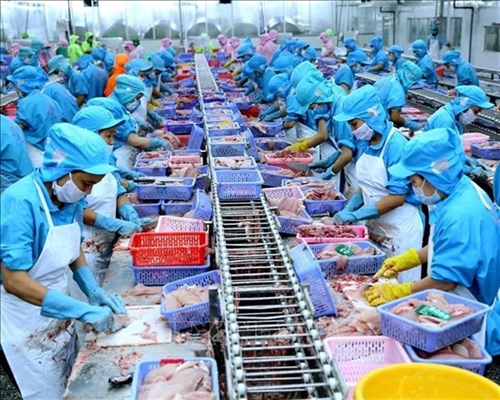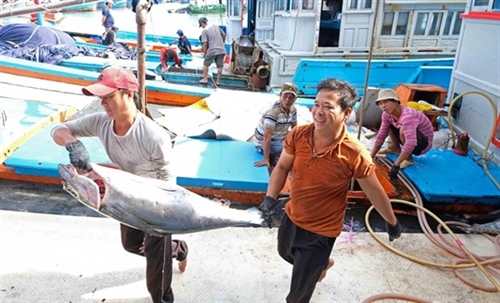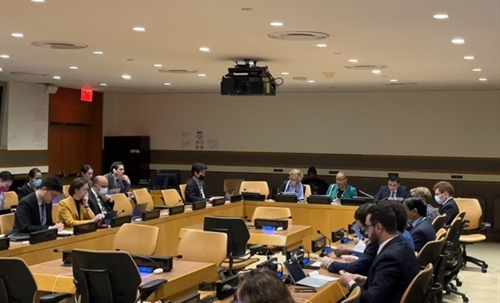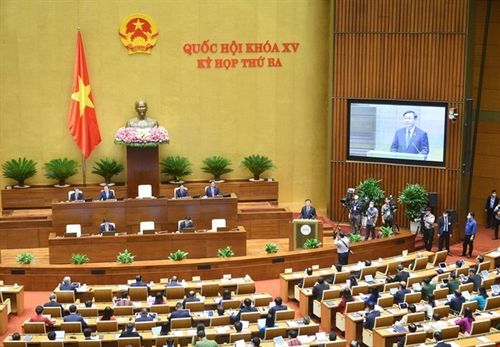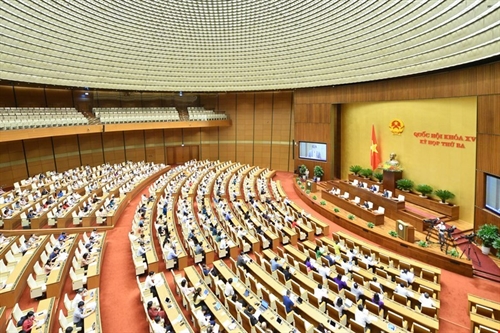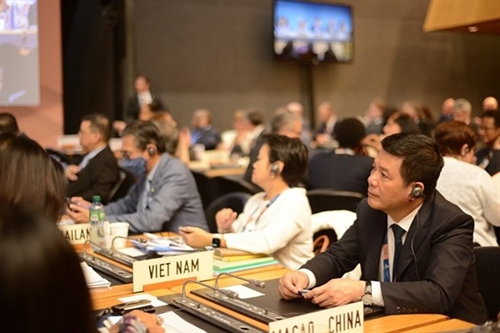The Mekong delta region is expected to develop agricultural centers in association with specialized farming zones and urban areas.
 |
| Rice is harvested in the Mekong Delta's Vinh Long province.__Photo:VNS/VNA |
The plans were laid out in the Politburo’s Resolution 13 on developing the region until 2030.
Prime Minister Pham Minh Chinh on June 18 signed a Resolution to issue the Government action plan on Resolution No. 13, which covers the socio-economic development and maintenance of security and national defense of the Mekong delta region until 2030.
The agricultural centers will include one in Can Tho city associated with the development of logistics services in Hau Giang province; centers in Hau Giang and Dong Thap provinces in connection with fresh water aquatic products, fruit and rice; centers in Kien Giang, Ca Mau and Soc Trang in connection with seafood production in coastal areas; and centers in Tien Giang and Ben Tre associated with fruit and crops.
Economic restructuring for the region is to be promoted, in association with shifting the growth model and applying science and technology, innovation and the development of a green and circular economy in line with biodiversity, culture and people of the region.
The resolution also targets to build Can Tho city into a developed center of the Mekong delta region and My Tho, Tan An, Long Xuyen, Rach Gia, Ca Mau và Soc Trang into specialized complexes.
It will also develop Phu Quoc in Kien Giang province into a center of high-quality ecological tourism and service and of national and international sea and island tourism with linkages to major economic centers in the region and the world.
The resolution will focus investment on developing the An Giang border economic zone, issue incentives to develop Dong Thap border economic zone into an economic complex of industry, trade, services, tourism, urban areas and agro-forestry and fisheries and a center for economic exchange between countries in the sub-Mekong region.
The Mekong delta region will get priority to develop socio-economic infrastructure, including the development of infrastructure to adapt to climate change and the development of modern, smart and synchronous information technology infrastructure in association with the growth of economic corridors, promoting connection and integration of urban-industrial economic corridors from Can Tho city to Long An province, along Tien and Hau rivers, along with coastal areas from Long An, Ca Mau provinces to Kien Giang province and along economic border corridors from Long An province to Kien Giang province.
Under the resolution, an expressway system connecting the southeastern region will be completed by 2030 together with a system of seaports and international border gates.
Focus will also be placed on developing digital infrastructure to build the e-government and digital economy.
The resolution sets a target for the Mekong delta region to achieve an annual average growth rate of 6.5-7 percent during the 2021-2030 period.
It also sets tasks for socio-cultural development and improves the living conditions of local people.
PM Chinh asked ministries, agencies and People's Committees of provinces and cities of the Mekong delta region to build action plans to implement the resolution before September 30 and regularly supervise and examine the implementation of assigned projects and tasks for annual assessment and reporting to the PM.
The Mekong delta comprises Can Tho city and the provinces of An Giang, Dong Thap, Long An, Tien Giang, Vinh Long, Ben Tre, Tra Vinh, Soc Trang, Hau Giang, Bac Lieu, Ca Mau and Kien Giang. It is one of the largest and most fertile deltas in Southeast Asia and the world.
The Mekong delta is the biggest food, fishery and fruit production hub in Vietnam.-(VNS/VLLF)
